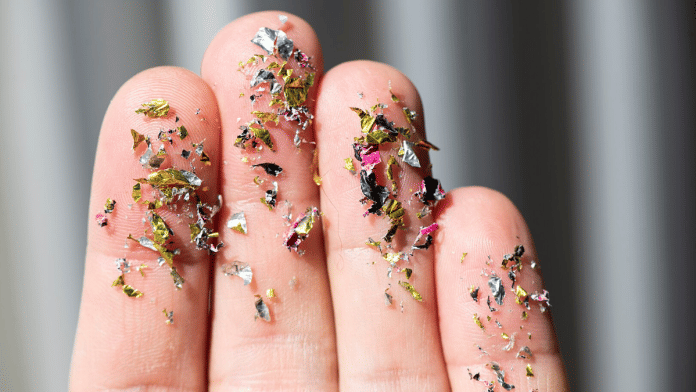New Delhi: A panel constituted by India’s apex food regulator to assess the prevalence of microplastics and nanoplastics in the country and our exposure levels will soon recommend methods for monitoring these contaminants in commonly used food items and bottled water, ThePrint has learnt.
This comes amid a first-of-its-kind report raising alarm about microplastics and nanoplastics in most branded and non-branded salt and sugar products consumed in India.
Microplastics are synthetic or semi-synthetic, solid, water-insoluble, high-polymer plastic particles below five mm in diameter. These are used as raw materials for many products and formed during the degradation of any plastic product.
On the other hand, plastic particles of a diameter below one micrometre are called nanoplastics.
Microplastics and nanoplastics occur across the food chain, leading to their presence in human food and increasing the possibility of human exposure to associated toxic chemicals.
Tiny plastic particles enter the human body via food, water and air. Of late, human internal organs, such as the lungs, heart, breast milk, bloodstream, and fetal placental tissues, have shown traces of microplastics.
There is no evidence yet to confirm that exposure to microplastics increases the risk of inflammation and cancer of the lungs, heart attack, endocrine disruption, weight gain, insulin resistance, or infertility.
Nearing completion
The Food Safety and Standards Authority of India (FSSAI) kicked off its assessment last year, with researchers from the Council of Scientific and Industrial Research (CSIR)-Indian Institute of Toxicology Research, Lucknow, Indian Council of Agricultural Research (ICAR)-Central Institute of Fisheries Technology, Kochi, and Birla Institute of Technology and Science (BITS), Pilani.
It is now finalising the report, said sources.
“The researchers have been working on the development and validation of analytical methods for identification and quantification of micro- and nano-plastics in food matrices and intra-laboratory comparison of developed methods in identified food matrices,” a senior FSSAI official told ThePrint.
Food matrix is the term for the physical structure, form, texture and chemical and molecular components of food and how they interact — all of which affect food digestion and metabolism.
“The panel has also worked on the surveillance and determination of micro- and nano-plastic exposure levels in identified food matrices and is about to come up with a detailed set of recommendations,” the official added.
Another official in the FSSAI maintained that once the report by the panel is evaluated, the regulator might devise norms for regular monitoring of food samples to detect microplastics.
Currently, there are no regulatory limits on the levels of microplastics in bottled water- which are likely to contain them- or any food item.
Experts called this a significant proposal.
“Robust monitoring (of microplastics) is essential to protect food safety, public health, and environmental sustainability while addressing the country’s plastic pollution challenges,” Ravi Agarwal, founder director of Toxics Link, an environmental research and advocacy organisation, told ThePrint.
According to Saurabh Arora, managing director at Auriga Research and a food safety and testing expert, monitoring and measuring microplastics in food products is significant because microplastics are present in different food products now.
“These can be introduced as early as during the farming stage. Several farming procedures now include plastics. Since it is a new and developing field, several things, such as what harm these plastics could cause in the long run, are yet to be established…. We have seen microplastics easily reaching our bodies from the food chain,” Arora said.
“When we do not know the implications of a certain contamination, it becomes even more important to measure and monitor it so that we can come up with correlation and precise impact on human health,” the food safety expert stressed.
Raising alarm bells
A first-of-its-kind study testing the presence of microplastics in salt and sugar came out in August 2024. All Indian salt and sugar brands, small and big, packaged and unpackaged, sold both online and in local markets, contain microplastics, the findings showed.
The study by Toxics Link also found that iodised salt has higher amounts of microplastics in the form of multicoloured thin fibres and films.
As part of the exercise, 10 commonly used salts, including table salt, rock salt, sea salt and local raw salt, and five sugar samples were purchased online or from local markets for laboratory testing.
All were branded samples, except for two salt and one sugar sample. Of the 10 tested, three samples were of packaged iodised salt, three of rock salt, including two organic brands, two sea salt samples, and two more local brands.
Agarwal said that microplastics can enter the human body via three primary routes—ingestion, inhalation, and direct skin contact.
“In all living organisms, exposure to microplastics can lead to harmful effects, inflammation and increased absorption or movement of these particles. The research studies show microplastics in water, soil, and food staples, such as seafood, salt, milk, and packaged goods,” Agarwal pointed out.
(Edited by Madhurita Goswami)






